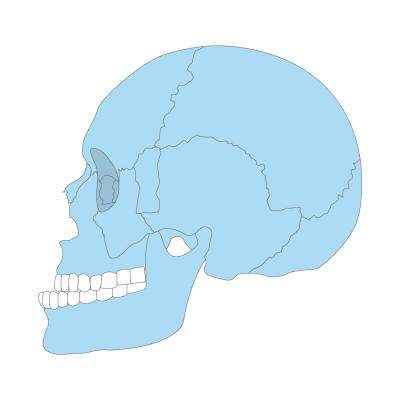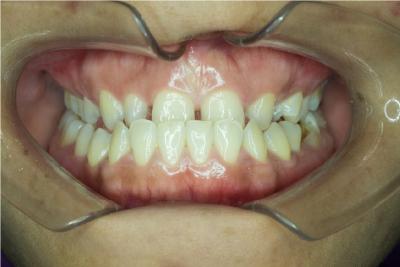How to Fix an Underbite Without Braces: All Proven Methods
Written by Dr. Febin George, BDS | Medically Reviewed by Dr. Shaista Salam, BDS; Dr. Zein El Hammouz, DDS, MFD/RCSI

Table of Contents
2. Different classes and types of underbite
3. Causes of underbite
4. Consequences: if you don’t fix underbite
5. Underbite treatment options without braces
What is an underbite?
An underbite or mandibular prognathism is a condition in which the lower front teeth are positioned more forward than the upper front teeth. In a normal bite, the upper teeth should overlap the lower teeth whereas in the case of an underbite the lower teeth extend forward. (1)
Different classes and types of underbite
An underbite can be of two types namely:
- Skeletal underbite
- Dental underbite
Skeletal underbite
Skeletal underbites are associated with problems in the developmental stage of the upper and lower jawbones. The lower jawbone grows more than the upper jawbone or there is an undergrowth of the upper jawbone. Both of these conditions result in a skeletal underbite.

Dental underbite
A dental underbite is not skeletal in origin. Instead, it is a result of teeth misalignment of teeth.
Image

Underbite vs. Overbite
Overbite is the term used to describe the extent to which the upper teeth vertically overlap the lower teeth. Normally the upper teeth extend almost 2mm over the lower teeth. When the overbite increases above 2mm it is called a deep bite.
An underbite is when the upper teeth bite behind the lower teeth.
Causes
Properly aligned teeth are important for oral health. Not only do they ensure proper biting, chewing and speech. Therefore, if there are any teeth misalignments, they should be diagnosed at the earliest and treated accordingly.
The most probable causes of an underbite are:
- Familial tendency: Genetics plays a major role in determining the size of a person’s jaw and the shape of the teeth. Therefore, issues like underbites may run in families.
- Trauma: An injury to the face during developmental years may cause trauma to the developing teeth and jawbone, resulting in discrepancies. Sometimes, children fall down and prematurely lose their baby teeth. This may contribute to alignment issues.
Consequences: What happens if you don’t fix your underbite
Underbites can have a detrimental impact on the overall health of an individual. Hence, one should consult an orthodontic expert and get treated to avoid complications related to an underbite. Listed below are the most significant consequences of not fixing an overbite:
Lowered self-confidence
Underbite can alter the shape of the face and therefore, affect the appearance of an individual. Hence, underbites can make one feel conscious about one’s looks and lower self-esteem. Research reveals that orthodontic treatment can improve the appearance and boost the inner confidence of individuals with misaligned teeth. (2)
Dental problems
Misaligned teeth with an underbite can lead to problems with chewing food. Individuals may even experience speech defects like slurring or lisping.
When teeth are not in their correct alignment, maintaining good oral hygiene is a challenge and there is a high chance of food lodgement in between the teeth which can cause gum diseases (like gingivitis) and dental decay. An improper bite can also increase the risk of tooth fracture.
Chronic jaw pain
An underbite can cause chronic jaw pain which is a symptom of temporomandibular joint disorder (TMD). Chronic headaches, earaches, and toothaches are common side effects of TMD.
Image

Underbite treatment options without braces
Just like any other dental abnormality, underbites should be treated at the earliest to avoid future complications. The age of the individual is one of the most important factors in deciding the treatment option. So, how to fix an underbite without braces? In the case of children, the primary focus of the orthodontist would be to modify the growth of the jawbone through different appliances like headgear or chin cups.
In adults, surgery is a favorable underbite treatment option for excessive underbites as the growth of the jawbones cannot be modified. The most common surgery to rectify underbite is the advancement of the upper jaw and the setback of the lower jawbone.
Mild to moderate cases of underbite can be corrected with the help of clear aligners. Proper dental alignment can be achieved through sequential tooth movements and reducing the underbite with the help of clear aligners. In addition, clear aligner therapy can be used to prepare severe cases for surgery.
Can aligners fix underbite? Absolutely!
If you are wondering how to fix an underbite without braces, Clear aligners are a great option. They can eliminate or work around the need for elaborate treatment procedures like surgery or braces. Reach out to us, and we’ll connect you with the nearest Eon-certified doctor to learn if your underbite can be fixed through clear aligners.
Fixing an underbite in adults vs. children
It is recommended to fix an underbite at the earliest. Correction of an underbite is less complicated in children as the treatment is performed in the developmental stage when the growth of the jawbones is ongoing. At this age, the jawbones can be easily modified and guided to their correct position.
In adults, the growth phase of the jawbones is complete. The treatment option depends on the severity of the underbite. In severe skeletal underbites, surgery is the recommended option. If the underbite is mild or is limited to the malposition of the teeth, orthodontic treatment can fix the issue.
FAQS
.svg)

References
.svg)


.webp)
.webp)

.svg)